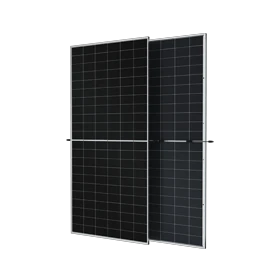types of roof solar panels
Types of Roof Solar Panels
As renewable energy becomes increasingly important in today’s world, homeowners are looking for ways to integrate solar energy into their lives. Roof solar panels stand out as one of the most effective methods of harnessing solar power. Choosing the right type of roof solar panels can significantly impact energy efficiency, cost savings, and the overall aesthetic of a home. In this article, we will explore the various types of roof solar panels available in the market, their characteristics, and their benefits.
1. Monocrystalline Solar Panels
Monocrystalline solar panels are known for their high efficiency and sleek appearance. Made from a single crystal structure, these panels typically have a dark, uniform color and are more efficient at converting sunlight into electricity compared to other types. Their solar cells can achieve efficiencies of over 20%. Due to their advanced technology, monocrystalline panels tend to be somewhat more expensive, but they are ideal for homeowners with limited roof space because they produce more energy per square foot.
2. Polycrystalline Solar Panels
Polycrystalline solar panels are another popular choice among homeowners. Composed of multiple crystal structures, these panels are usually less expensive to produce, which makes them more affordable for consumers. However, they tend to be less efficient than their monocrystalline counterparts, typically achieving efficiencies between 15% to 20%. Polycrystalline panels have a bluish hue and a less sleek appearance, but they can be an excellent choice for homeowners with larger roof areas where space is not a significant constraint.
3. Thin-Film Solar Panels
Thin-film solar panels are a newer technology that offers a unique alternative to traditional crystalline panels. Made by depositing a thin layer of photovoltaic material on a variety of substrates (such as glass, plastic, or metal), these panels are lightweight, flexible, and can be used in a variety of applications. Thin-film panels are generally less efficient than crystalline panels, with efficiencies typically ranging from 10% to 12%. However, their flexibility allows them to be integrated into building materials, providing aesthetic options that traditional panels cannot offer.
types of roof solar panels

4. Bifacial Solar Panels
Bifacial solar panels are an innovative design that allows for energy generation on both sides of the panel. These panels capture sunlight not only from the front but also from the reflected light on the back side, thereby increasing their overall energy output. Bifacial panels can be made from either monocrystalline or polycrystalline materials, making them versatile. They are an excellent choice for installation in areas with a lot of ground reflection, such as snowy regions or areas with high albedo surfaces.
5. Building-Integrated Photovoltaics (BIPV)
Building-integrated photovoltaics (BIPV) are designed to blend seamlessly into the architecture of the building itself. They can be integrated into roofs, windows, or facades, providing both energy generation and structural benefits. BIPV solutions can be made from various materials, including solar shingles and glass, and they allow homeowners to harness solar energy without compromising aesthetic appeal. While BIPV can be more expensive upfront, they can lead to long-term savings through energy generation and reduced building material costs.
Conclusion
Selecting the right type of roof solar panels for your home is crucial in maximizing energy efficiency and minimizing costs. Each type of solar panel has its own unique benefits and drawbacks, making it essential to consider factors such as budget, roof space, and personal aesthetic preferences. Monocrystalline panels offer high efficiency but come with a higher price tag, while polycrystalline panels provide a more affordable option with slightly lower efficiency. Thin-film panels are lightweight and flexible, ideal for unconventional applications, while bifacial panels maximize energy production. Building-integrated photovoltaics provide an attractive solution for those who prioritize design.
In conclusion, as the demand for sustainable energy solutions grows, understanding the different types of roof solar panels can lead to informed decisions that enhance both energy independence and home value. Whether prioritizing efficiency, aesthetics, or cost, there’s a solar panel solution suitable for every homeowner.
-
String Solar Inverter: The High-Efficiency Solution for Smart Solar EnergyNewsJul.14,2025
-
Revolutionizing Rooftop Energy with the Power of the Micro Solar InverterNewsJul.14,2025
-
Power Independence with Smart Off Grid Solar Inverter SolutionsNewsJul.14,2025
-
On Grid Solar Inverter: Powering the Future with Smart Grid IntegrationNewsJul.14,2025
-
Monocrystalline Solar Panels: High-Efficiency Power for the Future of Clean EnergyNewsJul.14,2025
-
Bifacial Solar Panel: A Smarter Investment for Next-Generation Energy SystemsNewsJul.14,2025







